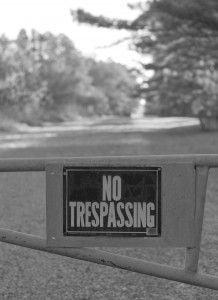Community groups dispute city’s solar farm proposal

November 18, 2013
Residents of northeast Carbondale say they do not have enough information about a project the city wants to put in their backyard.
The land in question is the site of the former Koppers Wood Treatment facility, where the U.S. Environmental Protection Agency found large areas of creosote-soaked land in 2003 and ordered current owner Beazer East Inc. to facilitate an environmental cleanup.
Advertisement
The city wants to make use of this land, but residents say the City Council has not given them enough information on the state of the site.
Kopper’s operated from 1902 to 1991 and treated railroad ties by pressure injecting creosote, a fungicide, into the wood. The EPA has found that occupational exposure to the chemical is a health risk as creosote can irritate the human body’s respiratory system.
During cleanup, Beazer isolated contamination above ground and constructed a unit to hold up to 30,000 cubic yards of contaminated soil. Beazer also had testing done to the property from 2006 to 2010 and determined the toxins did not spread to the neighborhood.
The site now sits unoccupied, surrounded by a fence and no trespassing signs.
Because of the contamination, the land qualifies for the EPA’s brownfield program, which promotes expansion, redevelopment and reuse of land complicated by the presence of hazardous substances.
City Council members say one of the few uses of the land is a solar panel. In May, the city held a public meeting to discuss redeveloping the land into a solar farm with Brightfields Development and held two tours of the site during the summer.
When the City Council attempted an Oct. 8 vote to give Brightfields a special-use permit for the solar farm, community members showed up to voice their disapproval.
Advertisement*
Residents said they did not trust putting anything else on the site where a company’s poor work conditions hurt family members and neighbors.
“I have watched my relatives die of multiple myeloma cancer, which generally is not a hereditary cancer, but is a chemical cancer,” Leatreasa Lilly- Madison said.
Lilly-Madison grew up a few blocks from the Koppers’ facility. She said she does not want to watch the same thing happen to future generations that happened to hers. She and several other community members questioned the safety of the solar panels, because while solar energy is widely thought to be safe, the workers at Koppers did not know at the time how harmful creosote was.
M. Stalls, a retired SIU professor, said there has been little recognition from the city honoring those who were lost because of Koppers.
“For the City Council to grant a special use permit to Brightfields in the condition (the land is in) is another slap in the face to the people that reside in that area,” she said.
Kathryn Field said at the Oct. 8 meeting that while she does not live in the neighborhood, the northeast side is part of her community. She as well as several others that spoke urged the council to table the permit vote.
“I am generally in favor of solar power,” Field said. “It’s renewable, it’s green, it’s wonderful. But that’s not the real issue here tonight. The northeast neighborhood of Carbondale many years ago was the victim of environmental racism. The Koppers plant dumped junk in their neighborhood year in and year out. I don’t know what the city knew. I don’t know who knew. Somebody knew. And many, many people have been impacted by this, and that’s the issue.
She said there were two issues at large.
“We have the mess from the creosote, which we can clean up relatively easily. It only takes many years and millions of dollars. But then there’s the harder problem, the fact that this neighborhood that doesn’t have any reason to trust what is being said to them,” Field said.
Councilman Don Monty said he understood the concern and hurt the community felt from the past use of the site, but renewable energy would benefit the city.
“I am convinced this is probably, short of having the land just stay vacant forever, this is probably the best way we are going to get some productive use from the land while at the same time not causing environmental harm,” he said.
Councilman Lance Jack asked for concrete questions and concerns from the residents be sent to the council so they could find the right information.
Permit tabled
After more than two hours of public comments, City Councilwoman Jane Adams moved to defer action on the special use permit until two meetings were held on the northeast side of town to discuss the project with representatives from the city, Beazer Inc., Brightfield’s Development and the Illinois Environmental Protection Agency.
Carbondale City Manager Kevin Baity said tentative meetings have been set for Dec. 10 and 12 but a location has not been found in the northeast neighborhood. Baity said water and sewer bills are being pulled to determine addresses of those who live near the Beazer East site to inform those residents when and where the meetings will be held.
Community discussion
Since the Oct. 8 meeting, residents have spoken about the future of the Koppers site at several community group meetings as well as both City Council meetings that have taken place since.
The Carbondale Racial Justice Coalition met Nov. 7 at the Church of the Good Shepherd. One of the group discussions focused on the solar array project. Melvin “Pepper” Holder informed the group that he wanted an additional health survey to be conducted before the city voted on the special use permit.
Concerned Citizens of Carbondale have also held meetings discussing the subject.
Sarah Schneider can be reached at [email protected]
Advertisement







